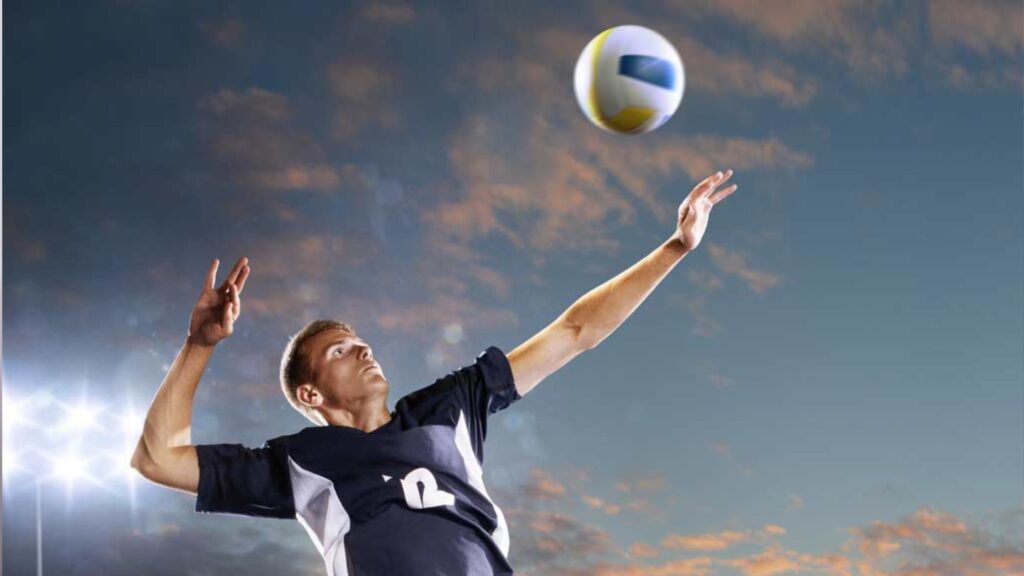Throwing overhead is a fundamental skill in many sports, from baseball and basketball to swimming and volleyball. It requires coordination, strength, and proper technique to execute effectively and avoid injury. However, many athletes, especially beginners, make common mistakes during throwing overhead that can hinder their performance and increase the risk of injury. Understanding these mistakes and how to correct them is essential for athletes of all levels.
This article will explore the most common mistakes during throwing overhead, the reasons behind them, and tips for improving your throwing technique. Whether you’re a coach, athlete, or someone just learning the skill, this guide will help you enhance your overhead throwing abilities while minimizing the risk of injury.
Table of Contents
Common Mistakes During Throwing Overhead
1. Poor Posture and Alignment
One of the most common mistakes during throwing overhead is poor posture and body alignment. When throwing, athletes often lean too far forward or backward, creating an imbalance. This misalignment can compromise the throwing motion and lead to unnecessary strain on the shoulder and spine.
How to Fix It:
Maintain a neutral spine throughout the throwing motion. Engage your core muscles to provide stability and balance. Your feet should be shoulder-width apart, and your weight should shift from your back foot to your front foot as you release the throw. Avoid hunching forward or arching your back excessively.
2. Not Using the Legs and Hips
A common mistake made by many athletes is relying solely on the arm to generate power, neglecting the role of the legs and hips. Throwing overhead without engaging the lower body limits the power and accuracy of the throw, and it places excessive stress on the shoulder joint, which can lead to injury over time.
How to Fix It:
Incorporate the full body into the throw. Begin the motion by pushing off with your legs, transferring the force through your hips and torso, and finally, allowing your shoulder and arm to complete the throw. Proper lower body engagement is crucial for generating power and reducing strain on the upper body.
3. Elbow Positioning
When throwing overhead, many athletes mistakenly keep their elbow too low or too high, which can cause inefficient throwing mechanics. A low elbow position can result in a lack of velocity and accuracy, while a high elbow position can put unnecessary strain on the shoulder joint.
How to Fix It:
Keep your elbow at a 90-degree angle during the throwing motion, ensuring that it stays in line with your shoulder. Your elbow should be in a slightly higher position than the wrist as you begin the throw. This positioning helps maintain proper alignment and optimizes the throwing mechanics, reducing the risk of injury.
4. Throwing Too Early or Late
Timing is critical when throwing overhead. A common mistake is releasing the ball too early or too late during the throwing motion, which can lead to inaccurate throws or unnecessary strain on the shoulder.
How to Fix It:
Focus on timing your release properly. The ball should be released at the peak of the throwing motion when your arm is fully extended and your body has completed the necessary rotational movement. Practice timing your release to ensure maximum power and accuracy while minimizing the risk of injury.
5. Not Following Through
A significant mistake many athletes make when throwing overhead is failing to follow through with the throw. The follow-through is an essential part of the throwing motion because it helps decelerate the arm in a controlled manner, preventing excessive strain on the shoulder and elbow.
How to Fix It:
After releasing the ball, allow your arm to follow through naturally. Your arm should continue its motion across your body, with your throwing hand finishing low and across your body. A full follow-through helps dissipate the energy from the throw in a controlled manner, reducing the risk of injury.
6. Lack of Shoulder Stability
Throwing overhead places significant stress on the shoulder joint, and if the shoulder muscles lack stability or strength, it can lead to injury. Weak or imbalanced muscles around the shoulder joint can cause instability during the throw, affecting both performance and safety.
How to Fix It:
Focus on strengthening the muscles around the shoulder, particularly the rotator cuff muscles, which play a critical role in stabilizing the shoulder during overhead motions. Incorporating exercises like external rotations, shoulder presses, and scapular retraction exercises into your training routine will help improve shoulder stability.
7. Overthrowing or Overexerting
Many athletes make the mistake of throwing with maximum effort every time, which can lead to muscle fatigue, strain, and eventually injury. Overthrowing or overexerting yourself can result in poor mechanics and a higher risk of stress injuries.
How to Fix It:
Take breaks during practice to allow your muscles to recover. Avoid throwing at maximum effort every time you practice, as this can cause wear and tear on the muscles, tendons, and ligaments. Focus on throwing with proper form and gradually increase your intensity to avoid unnecessary strain.
How to Improve Your Throwing Technique
Now that we’ve covered the most common mistakes during throwing overhead, let’s look at how to improve your throwing technique. Here are some key tips to help you throw more effectively and safely:
1. Warm-Up Properly
Before engaging in any overhead throwing activity, always warm up your muscles. A proper warm-up helps prepare your muscles, joints, and tendons for the motion, reducing the risk of injury. Focus on dynamic stretches that activate the shoulders, arms, and core muscles.
2. Work on Flexibility
Flexibility plays a significant role in the efficiency of your overhead throwing motion. Tight muscles, particularly in the shoulders, chest, and back, can limit your range of motion and lead to poor mechanics. Incorporate regular stretching exercises, particularly for the upper body, to improve flexibility and mobility.
3. Practice Proper Technique
Work with a coach or trainer to refine your throwing mechanics. Practicing proper form is crucial for improving efficiency and reducing injury risk. Perform drills that focus on body alignment, shoulder rotation, and the use of the legs and hips to generate power.
4. Strengthen Your Core
A strong core is essential for effective overhead throwing. Your core helps stabilize your body during the motion and enables the transfer of power from the lower body to the upper body. Incorporate exercises like planks, Russian twists, and leg raises into your fitness routine to strengthen your core.
5. Rest and Recover
Allow your body to rest and recover between throwing sessions. Overuse injuries are common in athletes who perform repetitive overhead motions without adequate recovery. Make sure to get enough sleep, stay hydrated, and follow proper nutrition guidelines to support your recovery process.
FAQs About Mistakes During Throwing Overhead
1. What are the common injuries caused by poor overhead throwing mechanics?
Common injuries caused by poor overhead throwing mechanics include shoulder strains, rotator cuff injuries, elbow tendinitis, and lower back pain. These injuries often result from improper form, overuse, and failure to engage the entire body during the throw.
2. How can I tell if I’m throwing incorrectly?
Signs that you may be throwing incorrectly include pain or discomfort in the shoulder, elbow, or lower back, decreased throwing velocity, and poor accuracy. If you notice any of these symptoms, it’s important to reassess your technique and make the necessary adjustments.
3. Is it okay to throw overhead every day?
Throwing overhead every day can increase the risk of overuse injuries, especially if proper recovery time is not taken. It’s important to give your muscles and joints adequate rest between sessions. Most athletes benefit from throwing 3-4 times a week, with rest days in between.
4. How long does it take to improve my throwing technique?
Improving throwing technique can take anywhere from a few weeks to several months, depending on the individual. Consistent practice, proper coaching, and attention to form are essential for making progress. It’s important to be patient and allow your body to adapt gradually.
5. Should I use weight training to improve my throwing power?
Yes, weight training can help improve the strength and power necessary for throwing. Focus on building strength in the legs, core, and shoulders. However, it’s important to avoid overloading the shoulder with heavy weights, as this can lead to injury. Work with a coach to ensure your weight training regimen complements your throwing technique.



